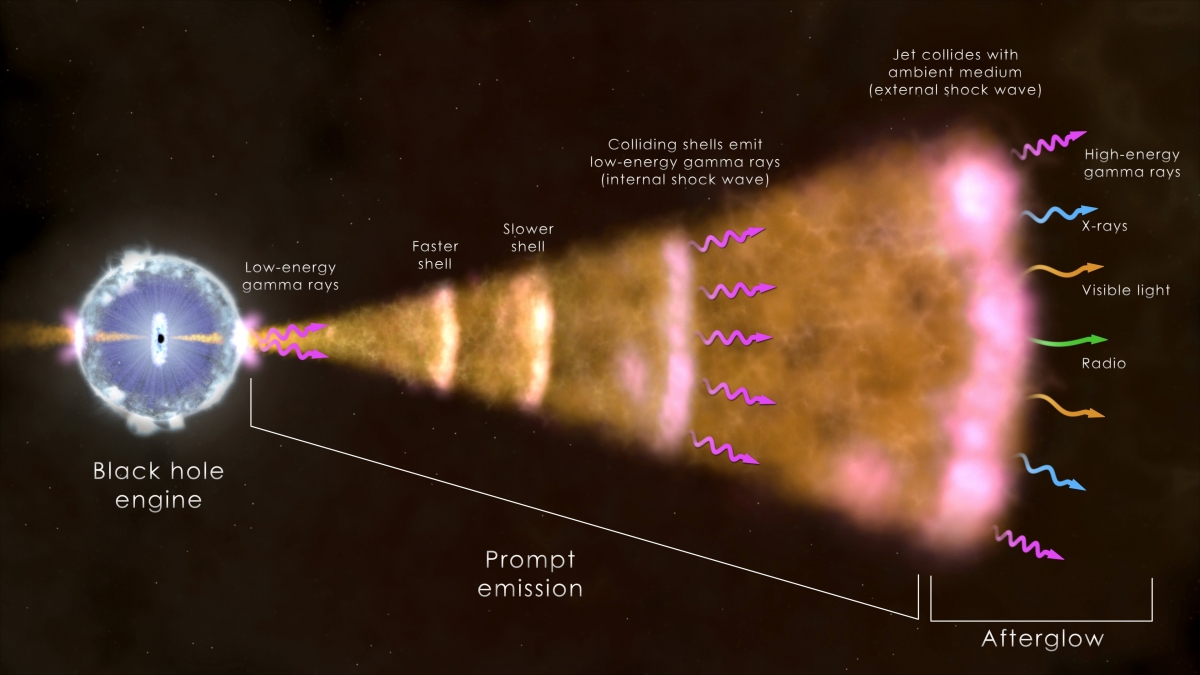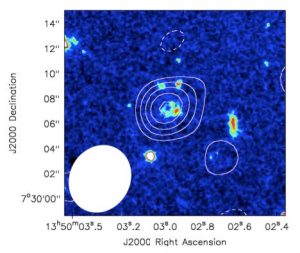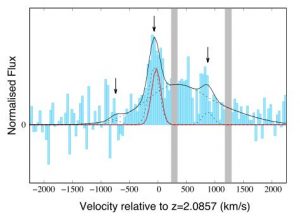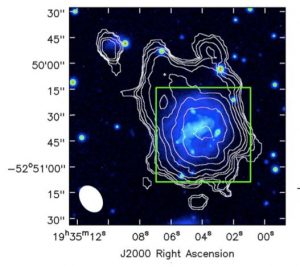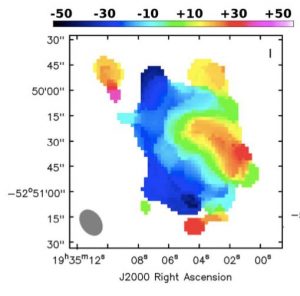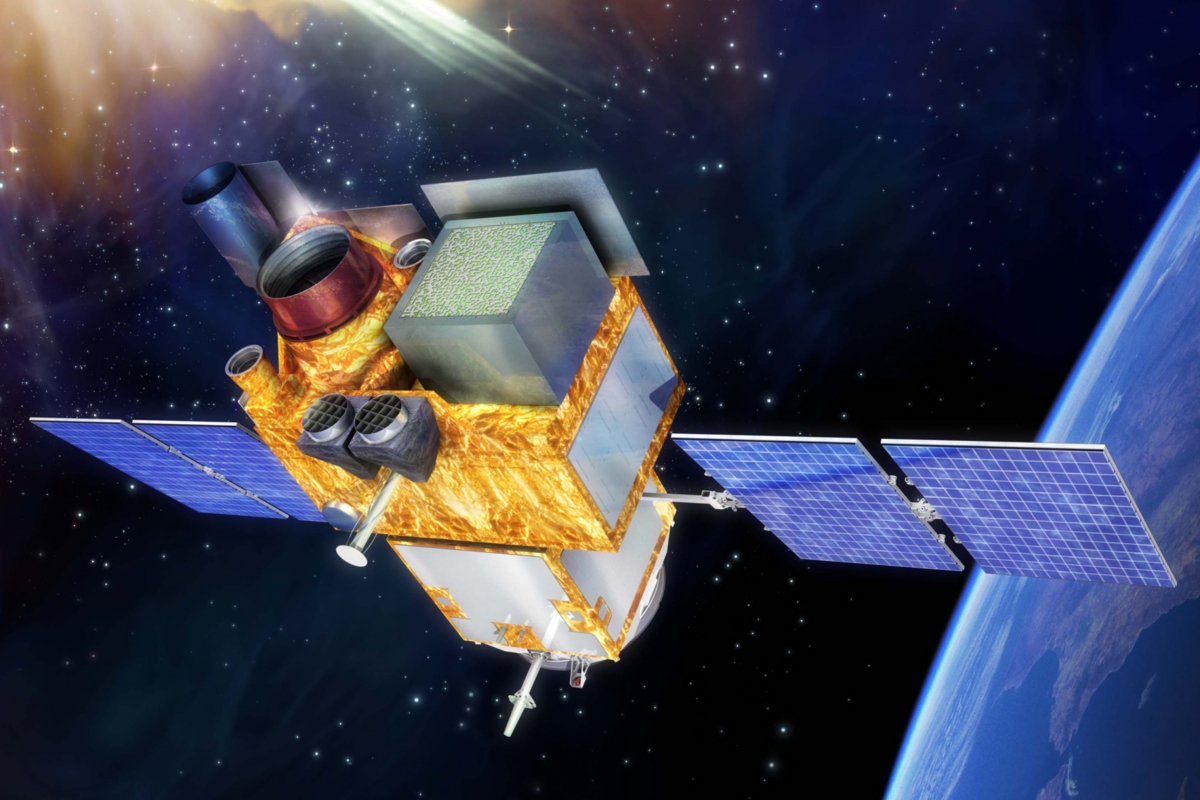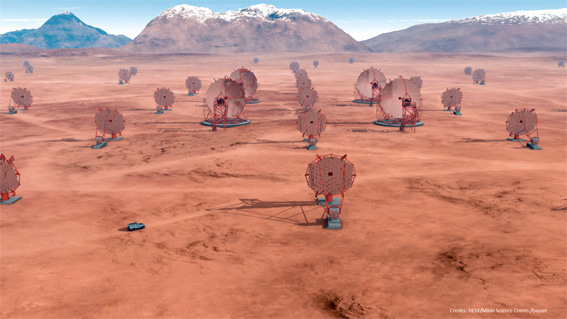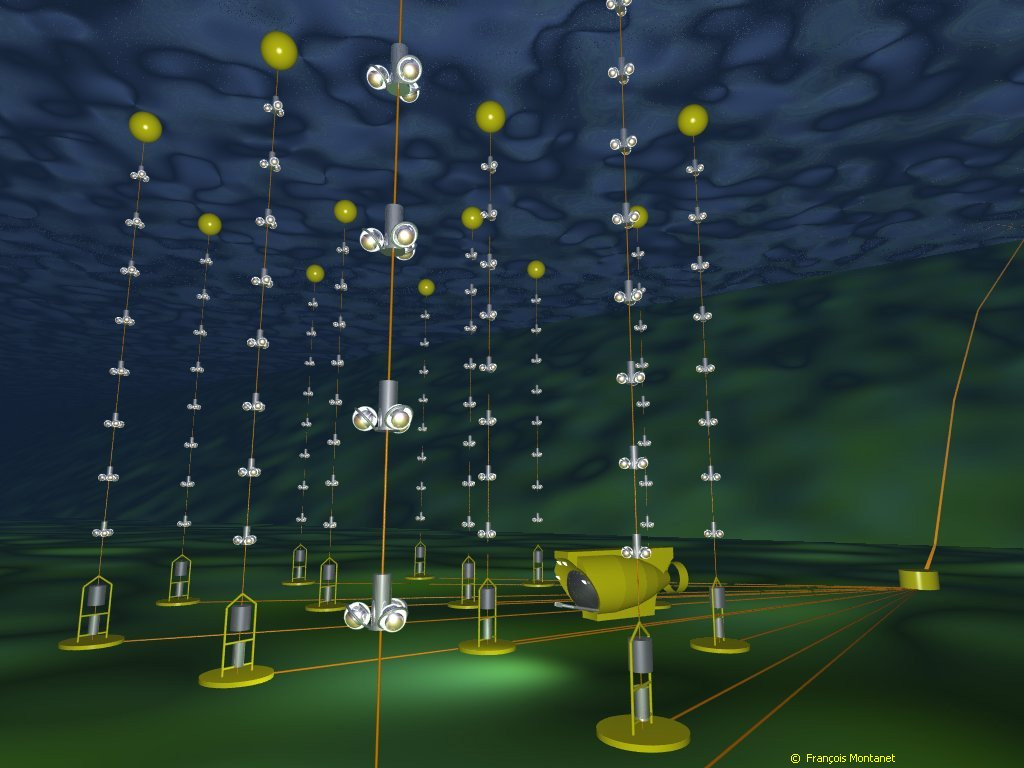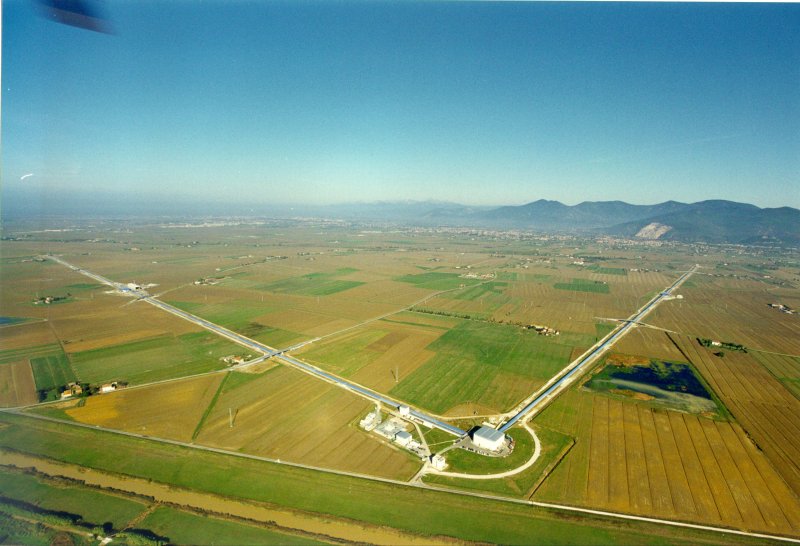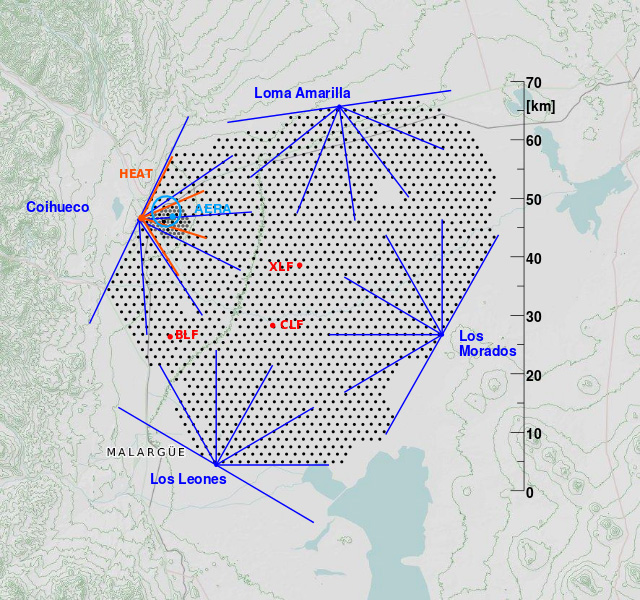I7: Gamma-Ray Bursts: a Unique Laboratory for Modern Astrophysics
> Read the articles connected to the project.
.
-
Gamma-Ray Bursts (GRBs) are transient gamma-ray flashes lasting from a fraction of a second to several tens of seconds. They appear unpredictably at random directions on the sky, and their elusive nature made them hardly detectable at other wavelengths for tens of years after their discovery in the late ‘60s of the last century. It was only in the late ‘90s that longer wavelength counterparts to GRBs could be detected for the first time: in X-rays, thanks to the BeppoSAX satellite, and subsequently in the optical and radio wavelengths. Thanks to the observations of these long lasting counterparts, the so-called afterglows, GRBs have been associated to cosmological sources (0.1<z<~9), and in few cases GRBs of the long category (i.e. lasting for more than 2 s) could be securely linked to Supernovae of type Ib/c (see e.g. Zhang B.-B. et al., 2011, ApJ, 730, 141, for a recent review on GRBs).
Despite the recent progresses in GRB science, obtained in particular thanks to the Swift and Fermi satellites, there are still many open questions. One concerns the mechanisms that power these extreme explosions (in a handful of seconds the isotropic equivalent energy emitted by GRBs spans from 1050 to 1054 erg, making them the most luminous events in the Universe), which is still unclear after more than four decades since their discovery. In particular the content of the relativistic flow that produces the GRBs, remains to be investigated: especially in terms of its bulk Lorentz factor, its magnetization, its baryon loading and their consequences on the possibility of GRBs being the sources of Ultra High Energy Cosmic Rays (UHECRs).
In addition, while there is a consensus on progenitors of long GRBs, as being very massive stars, the situation is less clear for what concerns the short GRBs. The most popular models involve the possibility of a coalescence of two compact objects (black holes or neutron stars), but a direct proof of this model is still lacking.
The high-energy part of the GRB spectrum
The observation by the Fermi/LAT of several GRB photons with energies reaching 50-100 GeV in the source frame is an encouraging sign for GRB detections with the next generation of instruments operating in the GeV and TeV domain. The extrapolation of Fermi/LAT spectral measurements to the VHE domain is difficult due to the limited knowledge of GRB properties at these energies (see Gehrels & Razzaque Frontiers of Physics 2013). In particular, it remains unclear whether the hard component observed in the spectra of several bright Fermi GRBs is a common property at GeV energies. In addition, intrinsic spectral cut-offs similar to the case of GRB 090926A are expected at 1-100 GeV energies, and are strongly related to the value of the GRB-jet Lorentz factor. For these reasons, current estimates of the GRB detection rate by future TeV experiments, like CTA, suffer from important uncertainties and range from ~0.5 to ~2 GRBs per year (Inoue et al., Astropart. Phys. 43, 252, 2013). Nonetheless, during the lifetime of SVOM, a few but invaluable GRB detections are thus expected in the 0.05-0.5 TeV range from CTA, especially in the light of the recent bright GeV afterglow detected for GRB 130427A (Tam et al., ApJ, 77, L13, 2013).
Joint time-resolved spectral analyses based on SVOM, and CTA data will also help to pinpoint the acceleration and emission processes occurring in GRB jets. Studies of the GRB prompt-emission phase from sub-MeV to sub-TeV energies can help to distinguish between leptonic and hadronic models, and to investigate the possibility of GRBs being a source of ultra-high-energy cosmic rays, and answer the long-standing question of the origin of the cosmic rays observed on Earth with energies larger than 1010GeV.
GRBs and the new messengers
To date neutrino and gravitational wave signals detected by current experiments could not be correlated with any precise astrophysical source. Thanks to their short duration and their high flux, GRBs are the best electromagnetic counterpart candidates, and a simultaneous detection would represent the start of a new era for those two research fields, namely the astronomy era.
Neutrinos:
Neutrinos are unique messengers to study the high-energy Universe as they are neutral and stable, interact weakly and therefore travel directly from their point of creation to the Earth without absorption. Neutrinos could play an important role in understanding the mechanisms of cosmic-ray acceleration, and their detection from a cosmic source would be a direct evidence of the presence of hadronic acceleration. Indeed, HE neutrinos are produced in a beam-dump scenario via meson (mainly pion π) decay, when the accelerated hadrons (protons or nuclei) interact with ambient matter or dense photon fields. The emitted neutrinos typically have an energy which is about 10% of the energy of the interacting protons. The production of neutrinos of 1014 eV then necessitates the acceleration of protons up to 1015 eV and is therefore expected independently of the question to know if GRBs are the source of UHECRs. Depending on the details of the model considered, these high-energy neutrinos are emitted in coincidence with, or as a precursor signal to gamma-ray emission.
Gravitational Waves:
On September 14, 2015 at 09:50:45 UTC the two detectors of the Laser Interferometer Gravitational-Wave Observatory simultaneously observed a transient gravitational-wave signal (Abbott et al., Phys. Rev. Lett. 116, 061102). The signal matches the waveform predicted by general relativity for the inspiral and merger of a pair of black holes and the ringdown of the resulting single black hole. The signal was observed with a significance greater than 5.1σ. This is the first direct detection of gravitational waves and the first observation of a binary black hole merger. This event is designated as GW150914. No electromagnetic counterpart was expected in the case of the merging of stellar masses black hole. Nevertheless, the increased sensitivity of the new generation of gravitational wave detector, let us hope for the coincident detection of a gravitation wave and the signal of a short GRB, this would provide “smoking gun” evidence for the binary nature of these GRB progenitor.

Gravitationnal wave signal detected by the Ligo collaboration. Credit : Abbot et al. (Phys. Rev. Lett. 116, 061102).
-
POSITION NAME SURNAME LABORATORY GRADE, EMPLOYER WP leader Diego GÖTZ AIM INGENIEUR CHERCHEUR, CEA WP co-leader Cyril LACHAUD APC MAITRE DE CONFERENCE, Paris 7 WP member Maryam ARABSALMANI AIM LABEX FUNDED POST-DOC WP member Bertrand CORDIER AIM INGENIEUR CHERCHEUR, CEA WP member Arnaud CLARET AIM INGENIEUR CHERCHEUR, CEA WP member Emeric LE FLOC’H AIM INGENIEUR CHERCHEUR, CEA WP member Laura GOSSET AIM PHD STUDENT, CEA WP member Susanna VERGANI GEPI CHERCHEUR, CNRS WP member Denis ALLARD APC CHERCHEUR, CNRS WP member Bruny BARET APC CHERCHEUR, CNRS WP member Eric CHASSANDE-MOTTIN APC CHERCHEUR, CNRS WP member Philippe LAURENT APC INGENIEUR CHERCHEUR, CEA -
The goal of the WP 7 Interface project was to prosecute our studies on Gamma-Ray Bursts (GRB) on two main subjects: on one side as potential and promising sources of gravitational waves, neutrinos, cosmic rays, and TeV gamma-rays, and on the other side on the observations and interpretation of data about the GRB environment. We focus our report on the results of GRBs as probes of their environment, obtained thanks to the LabEx hiring of M. Arabsalmani at AIM, tutored by E. Le Floc’h (AIM) and S. Vergani (GEPI), since it is where the labex funding has been mainly used in 2017.
Following the work initiated last year on the scaling relations between stellar mass, metallicity and velocity width in GRB host galaxies (see previous report), our results were published this year in Arabsalmani et al. 2018a, MNRAS 473, 3312 (including Le Floc’h + Vergani as I7 project members).
Our analysis of the CO molecular gas properties in the host galaxy of the long GRB080207 that we carried out with the IRAM/NOEMA interferometer (described in the previous report) was also finalized and published in Arabsalmani et al. 2018b, MNRAS 476, 2332 (including Le Floc’h + Vergani, Figure 1). In this paper, we report on the detection of important molecular gas reservoirs sustaining active star formation in the host galaxy of GRB080207.
Our result contrasts with previous claims pointing at a molecular gas deficiency in GRB hosts. It has thus led to a different picture on the efficiency of converting gas into stars in galaxies probed by long GRBs, which has recently received further support from other studies (Hatsukade et al., in prep., Bolmer et al., submitted). As a side result, the analysis that we carried out on the host of GRB080207 also allowed us to identify possible outflowing material redshifted with respec to the galaxy systemic velocity. We detect this outflow through its ionized component seen in H-alpha at optical wavelengths, but interestingly it is also observed through its molecular gas emission as found in the ALMA archive data. We proposed for follow-up observations with the SINFONI Integral Field Unit spectrograph at the VLT, with the goal of mapping the spatial distribution of this outflow, but unfortunately the proposal has not yet been approved
Figure 1: Left: The CO gas map (in contours) overlaid on the HST image of the GRB080207 host galaxy. The white ellipse represents the beam-size. The outermost contour is at 2σ significance, with subsequent contours in steps of 1σ. Right: The Hα and NII emission lines from the host galaxy of GRB 080207, with the best-fit two-component model showing the possible outflow (see Arabsalmani et al. 2018b).
Discovery of a satellite galaxy associated with the host of GRB980425/SN1998bw:
GRB980425 is the closest known GRB (z=0.0085) and was identified from its likely association with the hypernova SN1998bw. The characterization of the HI atomic gas detected in emission at 21cm in its host galaxy had revealed a perturbed structure possibly related to a recent galaxy merger (Arabsalmani et al. 2015). Following this result, we carried out a 21cm follow-up of this object with the Giant Meter Radio Telescope of India, with the goal of constraining its HI emission at higher spatial resolution and with better sensitivity. These new data have revealed, in addition to the HI associated with the GRB980425 host galaxy, a blob of HI emission at the same distance and located to the North- East of the host, detected at high confidence level (see Figure 2). This blob coincides with a very faint and low surface brightness galaxy appearing at optical wavelengths in deep images obtained at the Very Large Telescope, and which had not been previously reported. This source is also detected through the H-alpha emission of its ionized gas component, as well as in the near-IR image obtained with the Spitzer Space Telescope. Given the perturbed kinematic of the main HI gas component detected in the GRB980425 host galaxy, we believe that this host undergone recent interaction with this small dwarf satellite. Our interpretation is actually supported also by hydro-dynamical simulations that were performed this year to supplement these data, and which show that the observed properties of the HI gas in the GRB980425 host and its disturbed kinematic can be indeed reproduced by invoking galaxy interaction.
This result naturally raises the question of whether Long GRBs could be preferentially linked to galaxy interaction. In the host of GRB980425, the interaction with its dwarf satellite has likely triggered additional star formation, as corroborated by our simulations, and we cannot exclude that the progenitor of GRB980425 was born as part of this merger-induced star-forming activity. However, it is obviously impossible to assess this claim on a single case, and a larger statistical sample of GRBs occurring within galaxy mergers will be necessary to further investigate this scenario. So far, evidence for mergers and galaxy interactions was found for a number of GRB hosts in the more distant Universe,
but these identifications are mostly based on galaxy optical morphology, which is known to be tricky for high-redshift sources. And indeed, there is no definite clue showing a larger fraction of galaxy mergers among GRB hosts when compared to the general population of star-forming galaxies. The case of the GRB980425 is probably the first clear example of a GRB host in interaction based on gas kinematics. A larger follow-up of the HI gas in nearby GRB hosts will soon be possible with SKA and its pathfinders such as ASKAP and MeerKAT.
This work is reported in a paper that has circulated several times among co-Is, and that will be submitted to review in the coming weeks (Arabsalmani et al.).Figure 2: Left: HI map (contours) and optical image of the GRB980425 host, along with its satellite galaxy detected to the North-East. Right: velocity field of the HI gas, showing the disturbed kinematic of the galaxy. The color bar is in km/s (Arabsalmani et al. to be submitted).
Atomic and molecular gas properties of Super-Luminous Supernovae host galaxies, compared with the hosts of Long GRBs :
This year, we also submitted a number of proposals to facilities such as ALMA, NOEMA, VLA and GMRT, in order to pursue our characterization of the gas content of Long GRB hosts as well as the gas properties of the hosts of Super-Luminous Supernovae (SLSNe), both in the very nearby Universe and at high redshift. A decent fraction of such proposals were accepted, and M. Arabsalmani is currently working on the analysis of GMRT and ALMA data already obtained over the past few months. In particular, our ALMA observations of the GRB980425 will allow us to probe its molecular gas distribution, which will be compared to the HI atomic gas maps already obtained this year. The IRAMNOEMA and GMRT observation of SLSNe hosts will enable a detailed comparison between their gas content and that of GRB hosts, to gain further insights into the environmental differences between the progenitors of LGRBs and SLSNe.
SVOM
Space based Variable astronomical Object Monitor. It is a sino-french satellite to study Gamma-Ray Bursts, to launched in 2021. It’s been developed in France by CNES in close collaboration with CEA Irfu/SAp (AIM), APC, IRAP, LAM. French will provide a wide field coded mask camera (ECLAIRs, 4-150 keV), and a narrow field focussing X-ray telescope (MXT, 0.2-10 keV).
CTA
Cherenkov Telescope Array. It’s the next generation ground based next generation ground-based very high energy gamma-ray instrument (E> 10 GeV). It will serve as an open observatory to a wide astrophysics community and will provide a deep insight into the non-thermal high-energy universe.
ANTARES
The ANTARES Collaboration has built a large area water Cherenkov detector in the deep Mediterranean Sea, optimised for the detection of muons from high-energy astrophysical neutrinos.
Advanced Virgo/Ligo
TThe VIRGO and LIGO are gravitational waves detectors.
AUGER
The Pierre Auger Observatory is an international cosmic ray observatory designed to detect ultra-high-energy cosmic rays: sub-atomic particles traveling at the speed of light and each with energies beyond 1018 eV. The Layout of the Pierre Auger Observatory is shown below. Blue radial lines: view sectors of fluorescence detector (FD, 4×6=24) Black dot: Cherenkov ground station (Surface detectors, 1600) Red points: sites with specialized equipment (lasers, etc…).
G. Ghirlanda, … ,D. Götz, … , S. Vergani, Accessing the Population of High Redshift Gamma Ray Bursts, 2015, MNRAS, 448, 02514
S. Vergani , …, E. Le Floc’h, et al., Are LGRBs biased tracers of star formation? Clues from the host galaxies of the Swift/BAT6 complete sample of LGRBs. I: Stellar mass at z<1, 2015, A&A, 581, 102
Pescalli, …, S. Vergani, …, D. Götz, The rate and luminosity function of long Gamma Ray Bursts, 2015, A&A, in press, (arXiv:1506.05436)
W. Yuan,…, B. Cordier,…, D. Götz, et al., Perspectives on Gamma-Ray Burst Physics and Cosmology with Next Generation Facilities, 2015, Chapter of the Book Gamma-Ray Bursts: a Tool to Explore the Young Universe, to be edited by Springer (ISSI-BJ Workshop)
O.S. Salafia, M. Colpi, M. Branchesi, E. Chassande-Mottin, G. Ghirlanda, G. Ghisellini, S. Vergani, 2017, « Where and When : Optimal Sheduling of the Electromagnetic Follow-up of Grawitational-wave Events Based on Counterpart Light-curve Model, ApJ, 846, 62
R. Martone, L. Izzo, M. Della Valle, L. Amati, G. Longo, D. Götz, 2017, “False outliers of the Ep,i-Eiso correlation?”, A&A, in press, arXiv/1708.03873
A.B. Higgins, R.L.C. Starling, D. Götz, et al., 2017, “Investigating the nature of INTEGRAL Gamma-Ray Bursts and sub-threshold triggers with Swift follow-up”, MNRAS, 470, 314
N. Globus, D. Allard, E. Parizot, C. Lachaud, T. Piran, 2017, “Can we reconcile the TA Excess and Hotspot with Auger Observations?”, ApJ, 836, 163
Abbott,…,D. Götz, …,S. Vergani,…, et al., 2017, “Multi-messenger observations of a neutron star merger”, ApJ, in press
M. Arabsalmani, E. Le Floc’h, …, S. Vergani, et al., 2017, “A Molecular gas rich GRB host galaxy at the peak of cosmic star formation with significant outflowing gas”, submitted to MNRAS
M. Arabsalmani, …, E. Le Floc’h, …, S. Vergani, et al., 2017, “Mass and metallicity scaling relations of high redshift star-forming galaxies selected by GRBs”, MNRAS, in press
– Arabsalmani, M., Le Floc’h, E., …, Vergani, S., et al., 2018, A molecular gas-rich GRB host galaxy at the peak of cosmic star formation, MNRAS, 476, 2332
– Arabsalmani, M., …, Le Floc’h, E., …, Vergani, S., 2018, Mass and metallicity scaling relations of high-redshift starforming galaxies selected by GRBs, MNRAS, 473,3312
– Götz, D., …, Cordier, B., Le Floc’h, E., … ,Vergani, S., et al., 2018, The Infra-Red Telescope on board the THESEUS mission, Mem. S.A.It., in press, (https://arxiv.org/abs/1802.01676)
– J. T. Palmerio, S. D. Vergani, et al., 2018, Are LGRBs biased tracers of star formation? Clues from the host galaxies of the Swift/BAT6 complete sample of bright LGRBs. III. Stellar masses, star formation rates and metallicities at z > 1, A&A submitted
– Margutti, R., …, Laurent, P., Götz, D., et al., 2018, An embedded x-ray source shines through the aspherical AT2018cow: revealing the inner workings of the most luminous fast-evolving optical transients, ApJ, submitted

